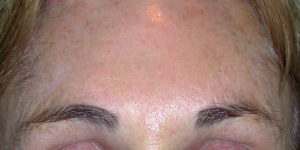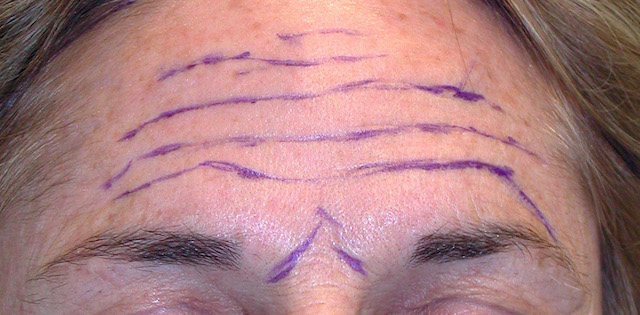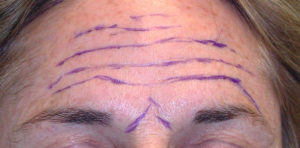Aging of the forehead affects multiple levels of tissue. Brows sag, horizontal wrinkle lines develop and vertical glabellar wrinkles lines/folds become more pronounced. Botox remains the mainstay of early prevention or treatment of these forehead changes. But unchecked or more advanced forehand aging is ultimately treated by a browlift operation.

In the May 2019 issue of JAMA Facial Plastic Surgery an article was published entitled ‘Association of Corrugator Supercilii and Procerus Myectomy With Endoscopic Browlift Outcomes.’ In this clinical paper the authors investigate whether the endoscopic treatment of the glabellar muscles (corrugator and procerus) improves the aesthetic outcome of endoscopic brow lifts. This was assessed in twenty-three patients over a two year period who had endoscopic browlifts of which seven (7, 30%) had no muscle resection while the remaining sixteen (16, 70%) had muscle resection.
One year postoperative pictures were assessed in neutral gaze as well as in dynamic frowning. The degree of frowning was assessed using the Fitzpatrick Wrinkle Assessment score with 0 being no wrinkling and 5 being severe glabellat wrinkles with redundant skin. A significant difference was seen between the treated (1.07) and non-treated muscle (2.56) brow lifts in dynamic wrinkle scores. At rest there was not a statistically significant difference between the two groups. (1.28 vs 1.00)
This study demonstrates, perhaps to no surprise, that performing glabellar myectomies in endoscopic browlifts has long term aesthetic benefit. While it does not necessarily improve the longevity of the browlift (this was not specifically studied) it did reduce the amount of glabellar wrinkling. It is not known how long such an effect will persist but it can be assumed that one year any return of muscle activity would have occurred. At the least I tell my endoscopic browlift patients that their postoperative Botox requirements will decrease. (but whether they can be completely eliminated on a long term basis can not be assured)
Dr. Barry Eppley
Indianapolis, Indiana




